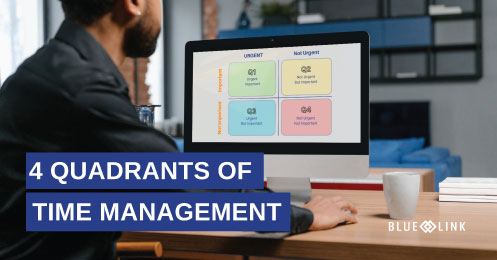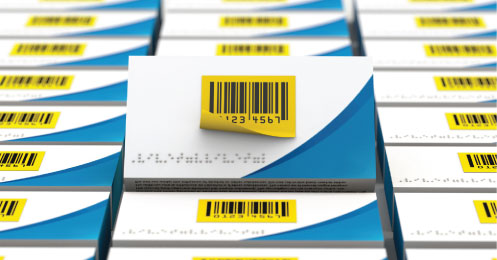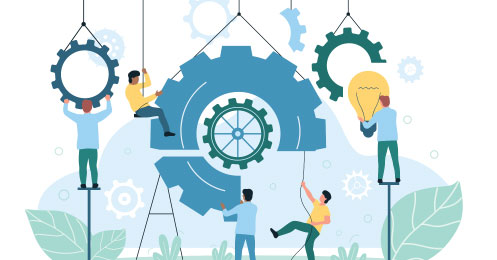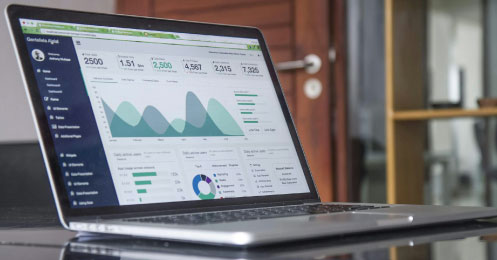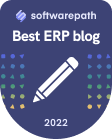Software implementations cover a variety of activities performed by the vendor you’ve selected and its team of experts, internal employees and potential users, your management team, and occasionally any outside consulting or IT representatives. When you make the decision to implement a piece of software, you’re also agreeing to follow the implementation processes laid out by that vendor. This means it is important to ensure all employees are onboard for the change and available to help where needed, outside of their normal job responsibilities. The specific requirements of your team during the implementation process and that of the vendor are identified during initial implementation meetings to make sure everyone is on the same page, and to ensure that adequate resources have been provided to complete the implementation on time.
With SaaS-based enterprise software, implementations do not happen overnight, but rather, over the course of several weeks and months depending on the vendor’s schedule and how complicated the implementation is. For example, implementations usually take longer when there is a high number of employees that need to be trained, if there is more than one company implementing the software, when there are multiple warehouse locations, when you’re moving from a very old legacy piece of software, or when you’re moving data from multiple existing solutions and sources.
Don’t have time to read this entire article right now? Download it for later reading or to share with your team! SaaS Implementation PDF Download (bluelinkerp.com)
SaaS Applications
As previously discussed, SaaS applications (software-as-a-service) apply to software that is licensed on a subscription model where the software is hosted on the software provider’s servers (or servers leased by the software provider) and not on the customer’s own physical equipment. With SaaS ERP there are different means of accessing the software and data. One common method is through an internet browser where a user types in a URL and then enters login and password information to use software via a specific website. Another option is to connect to software via an RDP connection.
RDP stands for “remote desktop protocol” and is a Microsoft-licensed technology that essentially allows a user at a remote computer to log into a server or a specific computer on a network over an internet connection. Once logged in, the remote user has access to that server or computer as if they were sitting in front of it. In either case, there can be significant set-up required before your company starts using the software and even though not all businesses will require the same set-up, it is important to carefully review each implementation proposal from the different vendors to determine exactly what is included with the implementation, and what is expected by your team.
Initial SaaS Environment Set-Up
For Blue Link ERP, the initial environment set-up includes spinning up and provisioning a new server environment for each individual customer and installing Windows. This means each customer has access to their own server environment, complete with Blue Link’s ERP software and related technologies and systems (including Microsoft, SQL, Crystal Reports, etc.). Each environment is customized and provides resources applicable to the size and requirements of the company, in terms of storage space, number of dedicated servers, RAM, CPU, web services etc. The initial server set-up also includes adding users and setting user permissions – generating secure login details and providing access to applicable applications and services.
As a Microsoft Partner, Blue Link ERP provides additional Microsoft resources (such as Office 365 licenses) at a discounted rate to our customers, which is also included as part of the set-up for a customer’s server environment.
On-Going Server Maintenance
One of the main benefits of SaaS ERP solutions is that your team does not have to manage the physical hardware, infrastructure or software itself. Instead, your company pays a monthly fee to the software vendor, leaving them to manage the server, software data back-ups, IT maintenance and security, and allowing your team to focus on the core objectives of your business and getting more sales. Once a server has been configured for your company, and you’re actively using the software and hosting environment, there is still regular monitoring and maintenance that takes place behind the scenes. The cost to manage these tasks and additional licensing costs is built into any monthly fees and they commonly include:
- Updating server and hardware infrastructure to the latest technology
- Maintaining the security of data and installation of appropriate firewalls etc.
- Data back-ups
- Microsoft and other software-related updates
- Managing users and user permission settings
- Anti-Virus/Anti-Ransomware protection
- Data security and vault protection
When searching for SaaS ERP, keep in mind the work involved as part of the implementation process and make sure you build this into your time frame. If there is a specific time of year that works best for your company to switch systems or a specific date you had in mind, remember to start discussions with potential software vendors well in advance as most vendors schedule implementations a couple of months in advance based on resource availability.
SaaS Implementation Best Practices
In order to successfully implement SaaS products and enjoy the benefits of the investment long term, the process requires attention to detail, time and patience. Once you’ve completed your software search and have settled on the publisher that best fits your business goals, it’s time to plan the implementation.
Recognizing and addressing the SaaS implementation challenges proactively, organizations can better navigate the complexities of digital transformation and SaaS implementation, ultimately driving innovation and achieving long-term success. A structured approach, encompassing thorough planning, meticulous execution, and ongoing support, is essential to navigate these complexities. This roadmap outlines best practices for each phase of SaaS implementation, ensuring that organizations can achieve their goals and maximize the value derived from their SaaS investments.
Identify Business Requirements
Start by evaluating your current processes and identifying areas for improvement. Understanding what your organization needs from the SaaS solution is crucial. This initial step ensures that the selected SaaS product aligns with your business goals and operational requirements, laying a solid foundation for the implementation process.
ECS Coffee, a Canadian coffee and espresso gear retailer, aimed to improve inventory management, streamline operations across multiple sales channels, provide accurate customer information, and enhance service quality. They faced challenges with fragmented systems for accounting, retail POS, and online sales, leading to incomplete customer histories, inefficient inventory control, and manual processes that hindered productivity.
Blue Link ERP addressed these objectives by implementing an integrated ERP system connecting all business areas, including office, online, and showroom sales. This e-commerce integration provided robust inventory management, automated reporting, real-time updates, and reduced manual errors. As a result, ECS Coffee enhanced operational efficiency, improved customer service, and supported its growth effectively by making informed decisions quickly and managing purchasing needs proactively.
Establish Ownership: Form a Software Implementation Team
To avoid shadow IT and unnecessary cloud spending, form a dedicated software implementation team. Having a team to oversee the implementation of SaaS products drives project success. For smaller companies, a team of two (an administrator and a training lead) may suffice, while larger companies may require a broader team, including a project manager, operations lead, and technical lead. A secondary team full of leads from each department can effectively address concerns directly from their respective teams. This structured approach ensures that all aspects of the implementation are managed effectively. Having the right, digital-savvy leaders in place is among the factors that contribute to a successful digital transformation initiative.
Collaboration is crucial for a successful SaaS implementation. Engage IT teams and end-users early on to gather insights, address concerns, and ensure a smooth transition. Involving these groups helps in identifying potential issues before they arise and ensures that the solution meets the practical needs of its users.
Evaluate Vendor Options
Research and compare different SaaS vendors. Consider factors such as features, pricing, scalability, and support. Thorough vendor evaluation helps in selecting a solution that not only meets your current needs but is also adaptable for future growth. Engaging stakeholders in this process can ensure a comprehensive assessment of each potential vendor.
You would also need to consult with the SaaS vendors to see if their solutions fit your needs. At Blue Link ERP, we have designed a quiz that acts as an initial assessment for our clients to find out if Blue Link ERP Software would be the right choice for them.
Outlining Key Metrics
The project leaders’ job is to oversee the entire implementation from beginning to end and in order to do so, the team needs to outline key metrics that help them with the success of the implementation. Key metrics include timeline, budget, customization considerations, and integration considerations. These metrics should also outline who will (if applicable) test the software and/or adopt it first. By doing a quick test, we can determine organizational processes that need to be addressed before rolling out to the rest of the company. Setting clear objectives helps in tracking progress and ensuring that the implementation stays on course.
Experts suggest that decision-makers engage employees in goal-setting initiatives and advocate collaborative goal-setting. Continuous review and distinction of performance and learning goals can also ensure the integrity of goals and the long-term vision of the business.
Develop a Detailed Implementation Plan
Create a comprehensive plan outlining the entire implementation process. This plan should include timelines, milestones, and responsibilities. A well-structured plan helps manage expectations and provides a clear roadmap for all involved parties, ensuring that each step is executed efficiently and on schedule.
Depending on the scale of transformation and change by implementing a SaaS solution your business might go through, you will need to communicate the implementation plan with your solution provider. For example, a wholesale distribution company can go through a total transformation in its processes by implementing ERP Software or Warehouse Management Software (WMS). Such cases require continuous conversations and detailed planning. Developing the implementation plan would be a great example of using the time management matrix.
Conduct User Acceptance Testing (UAT)
Test the SaaS solution thoroughly before full deployment. Involve end-users in UAT to identify any issues or usability challenges. This step is vital to ensure that the software functions correctly in a real-world environment and meets user expectations, reducing the risk of post-deployment issues.
Embrace Change by Training and Rollout Plans
We all know change is not easy and we often talk about the importance of change management. Not only will the tool change but so will the process in which employees get their tasks done. This will result in confusion and frustration, but you can get ahead of the game but preparing your team and providing enough training to answer all their questions.
Use the goals and milestones set to design a roadmap for rolling out the new software tool and training relevant team members. This plan should detail the order of departmental adoption if rolling out company-wide and outline the approach to training, ensuring that all stakeholders are informed and prepared for the transition. Several studies support the positive impact of employee training on their engagement level and the final success of digital transformation initiatives.
Training is a significant investment because it ensures employees can effectively use new systems, reducing manual processes and human errors. Proper training enhances productivity by making employees confident and proficient with the software, leading to more efficient business operations and cost reductions. Well-trained employees are better equipped to handle daily responsibilities, assist new hires, and solve problems independently. The value of ongoing training is emphasized to realize the system's full potential and continuously improve business processes.
Offering ongoing support to address any questions or issues is crucial for smooth adoption and continued efficient use of the software. Comprehensive training programs and accessible support channels significantly enhance user proficiency and satisfaction. Overall, the right vendor focuses not just on the software but also on understanding and enhancing the client's existing processes through continuous training and support.
You can implement a three-step approach to crafting a successful ERP training plan. First, determine the specific training needs tailored to distinct job roles rather than adopting a broad strategy. Evaluate the educational resources provided by vendors and manage change effectively. Second, choose the appropriate employees for the training program by considering their daily responsibilities, ensuring management support, appointing a project manager with strong leadership skills, and involving superusers to bridge the gap between business needs and IT support. Finally, offer continuous and adaptable training to ensure high user adoption rates and fully harness the potential of the ERP system. Foster a community for end-users to share experiences, promoting ongoing learning and efficiency.
Organize Vendor Implementation Assistance
Depending on the scale of the implementation and the SaaS vendor, organize assistance from the vendor’s implementation team. This can include data migration, training, and user onboarding. Clarify the support level agreements (SLAs) with the vendor to ensure timely and effective support during the implementation process.
In line with Blue Link’s dedication to service, a team of in-house expert consultants delivers comprehensive ERP software implementation services, encompassing training, data migration, installation, and customization. Both Blue Link consultants and their Partners recognize the critical role of SaaS solutions in business operations and possess the expertise to execute successful system implementations.
Build Initial Tech Stack Integrations
Initial tech stack integrations are fundamental to the successful implementation of software, as they foster efficiency, collaboration, and effective deployment. By leveraging both native and custom integrations, businesses can streamline operations and significantly reduce manual labor. A strategically designed tech stack connects disparate teams, automates routine processes, and minimizes repetitive tasks, ultimately maximizing productivity and ensuring efficient data management. Automated processes and seamless data transfer between integrated systems enhance data accuracy and security, allowing organizations to concentrate on their core activities with a reduced risk of errors.
The benefits of integration include cost reduction through the automation of processes, heightened productivity via improved workflow efficiency, and seamless data transfer and synchronization that provides real-time insights for better decision-making. By automating tasks, integration not only boosts overall productivity but also significantly reduces errors. However, it is essential to address challenges such as data synchronization complexities, system compatibility issues, and the handling of diverse data types. These challenges necessitate careful planning and specialized expertise to ensure smooth and effective integration.
To fully capitalize on these advantages, it is imperative to meticulously plan and allocate sufficient time for the development and rigorous testing of integrations. Prioritizing integrations that are most critical to business operations ensures seamless functionality from the start. A comprehensive tech stack incorporating both native and custom integrations guarantees the harmonious operation of all components, fostering a versatile foundation for the creation of diverse software solutions across various platforms. This strategic approach not only promotes a productive and secure working environment but also sets the stage for future growth and innovation, thus laying a robust infrastructure for ongoing business success.
Encourage and Track Adoption
Your new system will provide new functionality and tools that you should take advantage of. If it’s a new ERP system that is being implemented you can usually get automated reports to reflect usage frequency, feature utilization, change logs, feedback scores, and more. These metrics should also be outlined by the project management team and tracked throughout and after the implementation.
Identify The Impact on The Business
Along with usage reports, you can also set up performance reports to monitor the impacts the new SaaS product has on the business. For example, are salespeople better able to input sales orders? Are warehouse pickers able to find the products efficiently? These are the kinds of metrics you’ll want to review regularly. This will identify any areas for improvement or customization.
Complete Data Migration
Data migration is the process of transferring data from one environment to another, which is a crucial first step in implementing a new SaaS solution. Whether moving from a similar tool or manually migrating data from existing business processes, ensuring data security measures are in place is vital. Successful data migration maintains data integrity and ensures a smooth transition to the new system. A Data Migration Plan is essential as it outlines who is in charge of the migration, when it will occur, its duration, and how it might affect business operations, ensuring everyone is on the same page for a seamless transition.
At Blue Link, the entire data migration process is managed by an experienced team of in-house consultants. They transfer historical data from old systems and various file types (such as spreadsheets) into Blue Link ERP, eliminating the need for manual data entry. This service ensures that no information from existing solutions or other spreadsheets needs to be keyed in manually. The approach often involves a "big bang" data migration plan, ideal for small to medium-sized businesses, and typically led by the vendor over a single weekend, ensuring minimal disruption to business operations.
Continuous Improvement, Optimization, and Feature Adoption
Now that the product has been implemented for some time and employees are getting used to the change, it’s not the time to soften up on reviewing the system. Regularly get feedback from users and address concerns that they might have right away with the publisher.
Ensure that your team adopts the new software features effectively by focusing on critical functions first. Gradually introduce more advanced features to avoid overwhelming users. Monitor license utilization and provide additional training and resources as needed to maximize the value and efficiency of the new SaaS solution.
SaaS Implementation Concerns
Implementing SaaS as you can imagine, requires an investment of time and money. There are traps that businesses fall into causing a failed implementation. Here are three traps that many companies fall into during the implementation phase, preventing them from fully realizing the hoped-for, and readily available, benefits of the new system.
- Holding on to low or zero-value processes.
- Failing to align responsibilities and authority with processes.
- Deferring important parts of implementation until "later".
Let's take a brief look at each of these, focusing on the consequences and some examples specific to a Toy Distributor.
Holding on to low or zero-value processes.
Sometimes a process or action that was necessary under the old software is not really necessary once the new system is in place. If that process is in any way time-consuming, and no longer adds value, it should quite obviously be scrapped. But we are intrinsically creatures of habit and frequently these processes are kept either out of habit, or out of insecurity or uncertainty about the new system. The problem is that if we continue with these processes, we reduce both the perceived and actual value of the new system and miss opportunities to streamline and improve.
Example: A toy distributor previously used a system that required them to print reports at the end of each month for review. The new system allows management to print any report retroactively at will and view the reports as PDFs with the ability to easily send in an email. But the warehouse manager is used to having the printed report while walking around the warehouse. This means they spend time each month printing, collating and filing plus filing cabinets are taking up space in the warehouse to store this printed report.
The warehouse manager enjoys the paper copy so they may restrict change but it’s important to inform them that there is no value to a paper copy and that other alternatives exist, such as a single tablet with document management functionality.
Failing to align responsibilities and authority with processes.
The new ERP Software allows you to streamline processes, but that can only happen if you allow employees to use the system as designed, and thereby give all appropriate employees the appropriate level of access and training.
Example: In the same warehouse of the Toy Distributor, the previous system required that all picking be paper-based and the manually updated pick ticket is physically sent back to the office after shipping, for an accounting person to update the sales order with shipping information etc. Because of this, there is no computer in the warehouse.
The new system offers purpose-built screens for warehouse staff to update what was picked and shipped without seeing or changing anything else on the order. This will save time, improve accuracy, and eliminate paper, and yet in many cases, the business owner is reluctant to put workstations in the warehouse and train warehouse workers. So, the paper-based approach continues.
Deferring important parts of implementation until "later".
This one happens most frequently. You're planning to do something as part of the implementation, but it's not completely mission-critical to getting up and running with the new system, so you defer it until "later". The problem here is not delaying it - it is, of course, critical to prioritize during an implementation - but the vague timeframe of "later".
Instead, schedule these activities for specific dates, even if they are several months down the road - and then keep those appointments. These commonly include things like reports and automation of manual processes. It’s common that more than a year after implementation, businesses are still spending dozens of person-hours manually keying data into Excel because they haven't gotten around to scheduling the half day required to watch canned training videos on how to extract that data automatically from the ERP software.
SaaS Implementation Project Planning Using Covey’s Matrix
Implementing a SaaS solution is a transformative endeavor for any business, necessitating meticulous planning and effective time management. Leveraging Covey's Four Quadrants of Time Management can significantly enhance the success of such a project by categorizing and prioritizing tasks to optimize resource allocation and productivity.
In this framework:
- Quadrant 1 encompasses urgent and important tasks such as data migration, user acceptance testing, and immediate training, all crucial for preventing disruptions and ensuring a smooth transition.
- Quadrant 2 includes important but not urgent tasks like identifying business requirements, evaluating vendor options, and developing a detailed implementation plan, which are vital for long-term success.
- Quadrant 3 covers urgent but less important tasks, such as monitoring license utilization and handling user queries, which can be delegated to save time for more critical activities.
- Quadrant 4 involves non-urgent and non-important tasks, like focusing on advanced feature adoption, which can initially be minimized.
By systematically organizing SaaS implementation tasks into these quadrants, businesses can address immediate needs while also planning for sustained success, thereby maximizing ROI and facilitating business growth.
Let's avoid these traps. It'll make your life a lot easier in the medium and long term.


